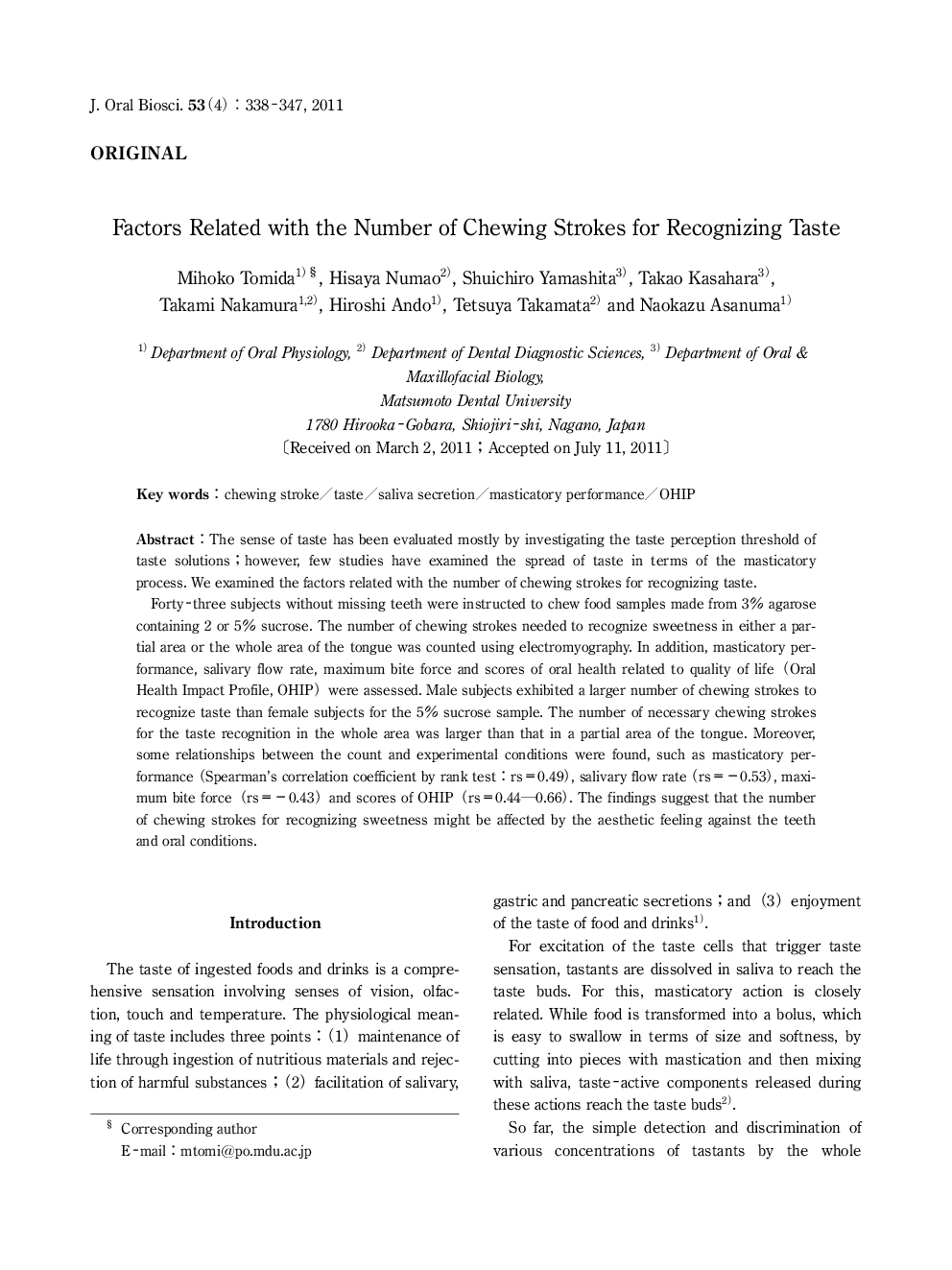| Article ID | Journal | Published Year | Pages | File Type |
|---|---|---|---|---|
| 2776952 | Journal of Oral Biosciences | 2011 | 10 Pages |
The sense of taste has been evaluated mostly by investigating the taste perception threshold of taste solutions; however, few studies have examined the spread of taste in terms of the masticatory process. We examined the factors related with the number of chewing strokes for recognizing taste.Forty-three subjects without missing teeth were instructed to chew food samples made from 3% agarose containing 2 or 5% sucrose. The number of chewing strokes needed to recognize sweetness in either a partial area or the whole area of the tongue was counted using electromyography. In addition, masticatory performance, salivary flow rate, maximum bite force and scores of oral health related to quality of life (Oral Health Impact Profile, OHIP) were assessed. Male subjects exhibited a larger number of chewing strokes to recognize taste than female subjects for the 5% sucrose sample. The number of necessary chewing strokes for the taste recognition in the whole area was larger than that in a partial area of the tongue. Moreover, some relationships between the count and experimental conditions were found, such as masticatory performance (Spearman's correlation coefficient by rank test: rs=0.49), salivary flow rate (rs= − 0.53), maximum bite force (rs= − 0.43) and scores of OHIP (rs=0.44 — 0.66). The findings suggest that the number of chewing strokes for recognizing sweetness might be affected by the aesthetic feeling against the teeth and oral conditions.
